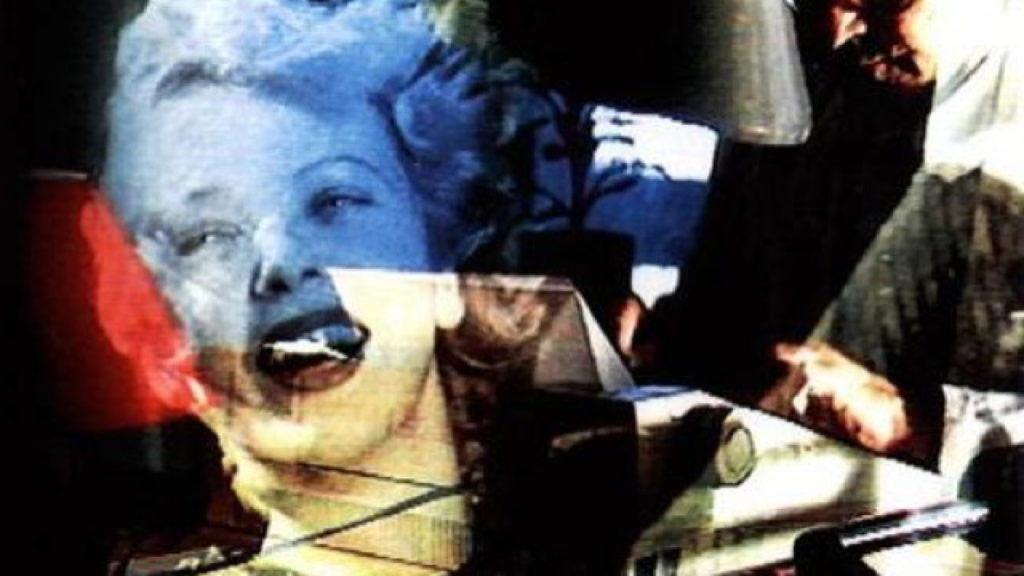“Looking at Histoire(s) du cinéma, the first chapter especially, I got the impression there had been three major events in the twentieth century: the Russian revolution, Nazism, and cinema, particularly Hollywood cinema, which is the power of cinema, the plague as you (Jean-Luc Godard) say.” – Youssef Ishaghpour to Godard, Cinema: The Archeology of Film and the Memory of a Century

Jean-Luc Godard may come in and out of fashion, but it seems indisputable that he, more than any other filmmaker, is the most important artist of the cinema in the twentieth century. One doesn’t need to particularly like or enjoy Godard’s work to appreciate its singular accomplishments. In fact, in the book I wish to address, Youssef Ishaghpour himself, despite the high regard in which he holds Godard, often challenges the filmmaker’s own ideas and readings concerning his films. Godard certainly has his fair share of detractors, certainly with concerns towards his latter period, but to summarily dismiss a work because it is difficult or unconventional is more an act of self-betrayal than a critique of a film or filmmaker.
The book in question here is the brilliant Cinema: The Archeology of Film and the Memory of a Century (first published in 2000) by Jean-Luc Godard and Youssef Ishaghpour. This publication is part of a series titled Talking Images, edited by Yann Perreau, which is primarily interested in investigating the usefulness and purpose of the cinema at the start of the twenty-first century. So it is fitting that the text of Cinema: The Archeology of Film and the Memory of a Century, a lengthy conversation between Ishaghpour and Godard followed by an essay by Ishaghpour, should focus on Godard’s mammoth Histoire(s) du cinéma.
In Histoire(s) du cinéma Godard employs a variety of avant-garde video tactics (superimposition, text overlays, dubbing, looping, etc.) to create a visual complex that is the equivalent in cinema to what Alfred Döblin and James Joyce achieved in literature. At the center of this complex is Godard himself, and from this center spirals the cinema in a series of rhyming and juxtaposing rhythms whose images are linked by Godard’s own subjective interpretation of his memories of the twentieth century which are, in-turn, embodied on the audio track and in text overlays. This complex yields over its 8 parts and 266 minutes a series of patterns and intersections, both formal, calculated and accidental, that locate a broader sense of purpose to the very design of cinema as a social and political form of art.
From this jumbled description, of what I consider to be Godard’s greatest achievement, above, one can begin to understand how complicated Histoire(s) du cinéma truly is and why it continues to perplex, enrage and enthrall audiences. Cinema: The Archeology of Film and the Memory of a Century is the most practical and useful guide one could hope for to dissect Histoire(s) du cinéma. The intimate, conversational quality of the “interview” section of the book gives Godard, by way of Ishaghpour’s insights and careful readings of the film, the opportunity not only to describe some of the specific meanings of certain images in Histoire(s) du cinéma, but to also address his own desired outcome of the project in terms of its spectatorship. This essentially serves to direct the reader’s focus to different elements of the film during different sections, though the conversation never becomes a matter of “mapping out” Godard’s complicated visual and audio complex.
There is also a casual, somewhat anecdotal quality to Ishaghpour and Godard’s conversation that is likely to be of interest to the viewer who never bothered to look at Godard’s work post-Weekend (1968). For instance, Godard’s interest in Hitchcock’s Marnie (1964), Orson Welles and his aesthetic relationship to John Ford, Henri Langlois, Jules Michelet, Jean Mitry, Georges Sadoul, Gilles Deleuze and Truffaut are all discussed and will no doubt satisfy the appetites of many a film major.
But to separate one element of the interview from the other is to dispense with the overall purpose of the text as a whole which is to rediscover Godard the filmmaker and critic in his Histoire(s) du cinéma. Ishaghpour’s closing essay, Jean-Luc Godard Cineaste of Modern Life: The Poetic in the Historical, eloquently argues that, with Histoire(s) du cinéma, Godard locates the cinema as a means of contesting History/Histoire(s). Ishaghpour very succinctly presents his idea within the wider context implied by Histoire(s) du cinéma, the state of contemporary art, by drawing on a variety of scholarship from Deleuze’s notion of the time-image to Sergei Eisenstein’s theories of montage.
I will say that some of the material in Cinema: The Archeology of Film and the Memory of a Century can be a bit forbidding insofar as it references an equally wide variety of texts as it does films (some more obscure than others). If one prefers a less focused study of a single Godard film, or is interested in films from earlier in his career, I would recommend Forever Godard, edited by James Williams and Michael Temple. Forever Godard is a fascinating volume that anthologized a series of essays about the filmmaker on various parts of his career that is fully illustrated with stills from his films (which make this volume a beautiful object as much as a book).
